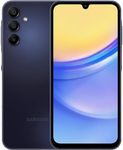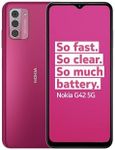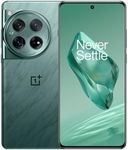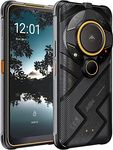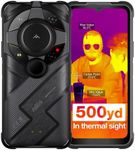Buying Guide for the Best Android Smartphones
Choosing the right Android smartphone can be a daunting task given the plethora of options available in the market. The key to making the right choice is understanding your own needs and how different specifications of a smartphone can meet those needs. Whether you prioritize camera quality, battery life, or processing power, knowing what each specification means will help you make an informed decision. Here are some key specifications to consider when choosing an Android smartphone.Display Size and ResolutionThe display size and resolution determine how large and clear the screen appears. A larger display is great for watching videos and playing games, while a smaller one might be more comfortable for one-handed use. Resolution, measured in pixels, affects the sharpness of the display. Higher resolutions like Full HD or Quad HD offer clearer images. If you consume a lot of media, a larger, high-resolution display might be ideal. For basic use, a smaller screen with standard resolution could suffice.
ProcessorThe processor, or CPU, is the brain of the smartphone, affecting its speed and ability to run apps smoothly. Processors range from entry-level to high-end. Entry-level processors are suitable for basic tasks like browsing and social media, while mid-range processors handle multitasking and gaming better. High-end processors are designed for heavy users who run demanding apps and games. Consider your usage pattern to decide which processor tier suits you best.
RAMRAM (Random Access Memory) is crucial for multitasking and running apps smoothly. More RAM allows for better performance, especially when switching between apps. Entry-level smartphones may have 2-4GB of RAM, which is sufficient for basic tasks. Mid-range devices often come with 6-8GB, suitable for moderate multitasking. High-end smartphones can have 12GB or more, ideal for power users who run multiple apps simultaneously. Choose based on how many apps you use at once and how demanding they are.
StorageStorage capacity determines how much data, apps, and media you can keep on your phone. Smartphones typically offer storage ranging from 32GB to 512GB or more. If you store a lot of photos, videos, and apps, opt for higher storage. Some phones offer expandable storage via microSD cards, which can be a cost-effective way to increase capacity. Consider your current and future storage needs when choosing.
Camera QualityCamera quality is a major consideration for many users. It involves not just the megapixel count but also features like aperture size, image stabilization, and software enhancements. Higher megapixels can mean better detail, but other factors like low-light performance and video capabilities are equally important. If photography is a priority, look for phones with advanced camera features. For casual use, a standard camera setup should suffice.
Battery LifeBattery life is crucial for ensuring your phone lasts throughout the day. It is measured in milliampere-hours (mAh). Higher mAh generally means longer battery life, but efficiency also depends on the phone's software and hardware. Phones with larger screens and powerful processors may consume more power. If you're a heavy user or often away from a charger, look for a phone with a larger battery or fast-charging capabilities.
Operating System and UpdatesThe Android operating system version and update policy can affect your phone's performance and security. Newer versions offer better features and security enhancements. Some manufacturers provide regular updates, while others may not. If staying up-to-date with the latest features and security patches is important to you, consider a brand known for timely updates.
Build Quality and DesignBuild quality and design affect the durability and aesthetics of the phone. Materials like glass and metal offer a premium feel, while plastic can be more durable and lightweight. Design also includes factors like water resistance and ergonomics. If you value a premium look and feel, opt for higher-end materials. For durability, especially if you tend to drop your phone, consider more robust designs.


